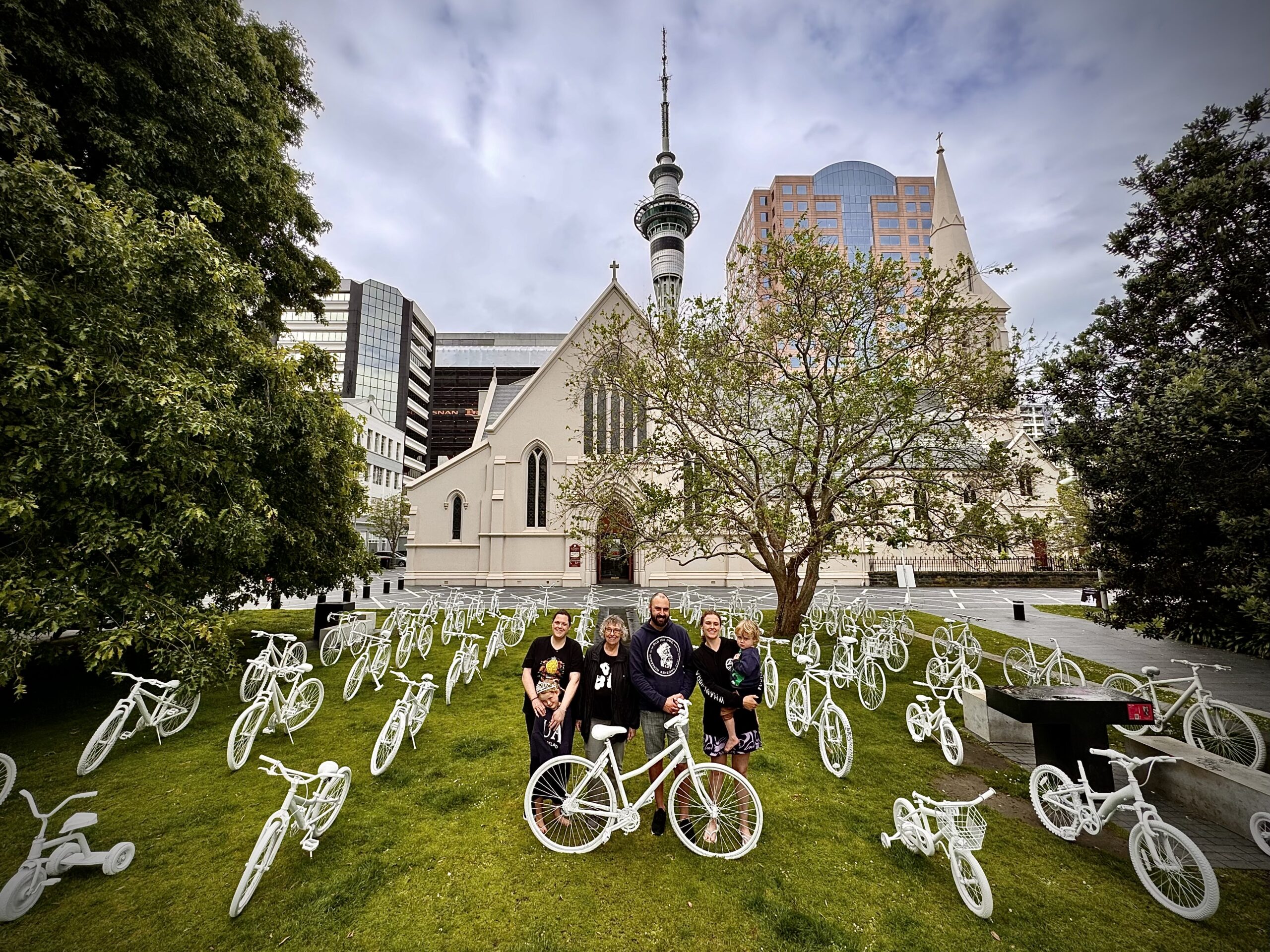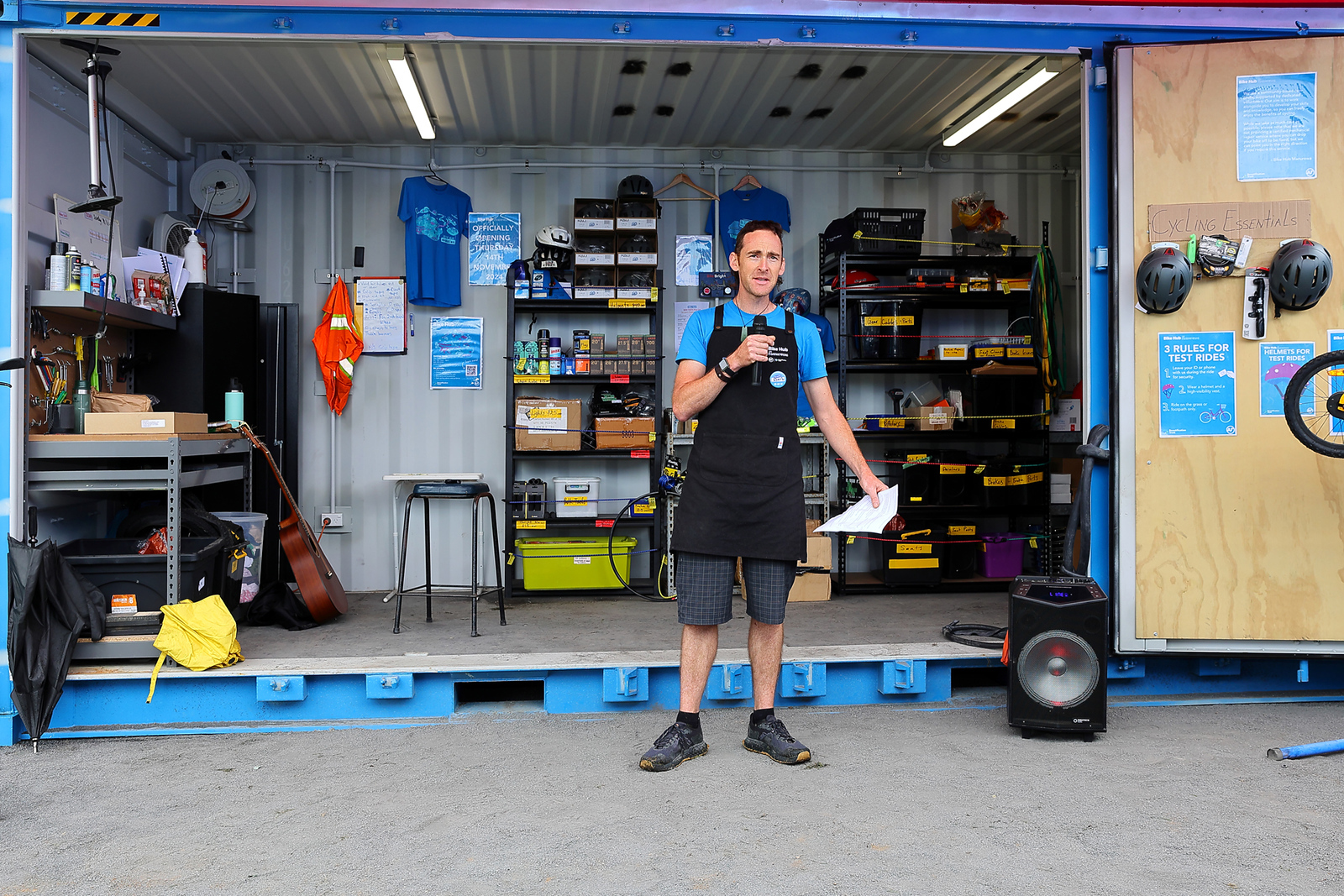Jonathan Wood rides a bike, and is a lawyer. This is the first of an intermittent series of Ask A Lawyer on a Bike, but since no one has asked him anything so far, he sought out a question that hasn’t been asked or answered yet…
“If a cycle lane is provided, am I obliged to use it?”
In other words, must you ride in the cycle lane? Or can you ride on the road?
Strictly speaking, someone has asked this question, but it was a wee while ago and the answers were, despite best intentions, ultimately unhelpful. It’s also been raised in Australia just this week, so it seemed timely to bring a local perspective for Aucklanders on bikes.
First: some definitions, because if you are obligated to use something you should be able to recognise what it is.
In the delegated legislation that governs this area, there are cycle lanes and cycle paths.
Under the New Zealand Road User rules, a cycle lane is a longitudinal strip within a roadway designed for the passage of cycles. The ‘roadway’ part of the definition is important. A ‘road’ is more or less anywhere you can drive a vehicle, legally or illegally. The ‘roadway’ is more confined, being just that part of a road designed for vehicles to use. In short, a footpath and berm might be part of a road, but they aren’t part of the roadway.
A cycle path is, by contrast, a part of the road (in the wider definition) that is physically separated from the roadway and intended for the use of cyclists. (It may also be a shared path if designated so by the Territorial Authority.)
The distinction will usually be easy to discern. For example the Northwestern cycleway, while a road in the sense that the Road User rules mean it, is physically separated from the roadway (quite substantially so, where it is adjacent to the Northwestern motorway – you can’t even access the roadway from the cycleway because of the high fences). So the Northwestern is a cycle path.
But there are more difficult cases. On Upper Queen St, the motorway overbridge has been re-designed so that the footpath was widened to cover what had been a parking bay. On this, half the footpath is marked out as for cycles. In my view this is a cycle path rather than a cycle lane, albeit a short one. It is physically separated from the roadway by being elevated by a curb.
But what of the newly minted Beach Road cycleway? If it had only been marked out with paint, it would have been a longitudinal strip within a roadway and therefore a clear example of a cycle lane. However, at stretches it is physically separated from the roadway (see below).
In my opinion, this is sufficient for it to be a cycle path for the purpose of the Road User rules – but it is arguable either way.
Back to the original question: “Am I legally obliged to use a cycle lane (and, I guess, now we know there is a difference, a cycle path)?”
The answer is: it depends.
Under the Land Transport Act, each local authority was given the power to make by-laws affecting road use. Each of the former councils that became Auckland Council had passed their own bylaws regarding road use. Those bylaws continue to be in effect until revoked and replaced by an Auckland-wide bylaw (as Auckland Transport’s 2012 bylaw is silent on the use of cycle lanes).
So in Auckland, we are left with a variety of laws, depending on the ex-council area you happen to be in:
Auckland City – this law is poorly drafted. It says: ‘Where a cycle path is provided on a footpath or the road, it must be used.’ Of course, if the cycle path is on the roadway, it is no longer a cycle path, it is a cycle lane, and so the next question is whether this bylaw is then in effect. It could be. Who knows? If a cycle path is on the footpath, does the bylaw take effect only if you were on the footpath, or does it compel you to leave the roadway and mount the footpath. Who knows?
So, would it be illegal to bike on the main part of Beach Road in the picture above, you might ask? Heaven only knows. This is a bad law – one where the objective wording can give you two different but opposite results, and then punishes you for guessing wrong.
Manukau City, Franklin, Papakura District, Rodney District and Waitakere City – no compulsion.
North Shore City – uses the terminology ‘cycle track’ and unhelpfully does not define what this is. Where a cycle track is marked on a footpath, the only part of the footpath you can use is the cycle track. Perhaps cycle tracks on the North Shore are only marked off the roadway and anything on the roadway is something else. Who knows?
Things become even more complicated as you move around the city. So, say you are using a road in the Whau local board area. You probably are obliged to use a cycle lane in the ex-Auckland City part (if that is indeed what the former Auckland city bylaw means). But if that cycle lane continues on into the ex-Waitakere City area (where there is no compulsion), you are no longer required to use the lane.
Eventually, probably, these assorted bylaws will be tidied up with one overarching bylaw for the Supercity. At that point, we might argue that it is not in Auckland Council’s interest to compel people to use cycle lanes. If a cycle lane is demonstrably dangerous, is not maintained, or is located in the door-zone, then compelling people to use it is inviting litigation. If a cyclist is compelled by a bylaw to ride in a dangerous part of the road, the harm and loss that inevitably follows should be the responsibility of the Council.
Or maybe this is a good thing – because if Council is laden with the effects of poor decision-making when installing cycle lanes, perhaps (and this could be wishful thinking) they will be better thought through and maintained in future?
— Jonathan Wood
Right. That clears that up – or not! Any questions for Jonathan about this, or any other aspects of the law as it applies to people on bikes?




